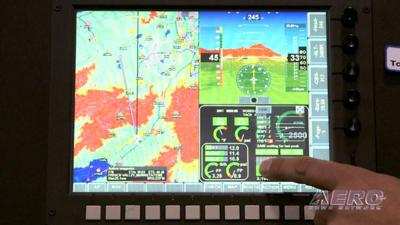Fri, Jan 03, 2020
But DOT OIG Finds The FAA Must Address Airspace Access Issues
The DOT Office of Inspector General (OIG) has released the findings of an audit that had been requested by then-Chairman Bill Shuster (R-PA) and Frank LoBiondo (R-NJ) when they led the House Committee on Transportation and Infrastructure and its Subcommittee on Aviation.

Citing concerns about whether operators will meet the 2020 deadline, the then-Chairmen of the House Committee on Transportation and Infrastructure and its Aviation Subcommittee requested that the OIG provide information regarding equipage rates for ADS-B and other NextGen technologies on air carrier and general aviation aircraft. Accordingly, our audit objectives were to (1) determine the equipage rates for ADS-B and other NextGen-enabling technologies on commercial and general aviation aircraft, (2) ascertain the reasons behind aircraft operators’ decisions to equip or not equip with these technologies, and (3) assess FAA and aircraft operators’ plans to meet the 2020 ADS-B Out equipage deadline.
In the audit, the OIG found that ADS-B Out equipage rates increased as the 2020 deadline approached, with other equipage rates varying depending on the NextGen technology. In addition, operators are installing ADS-B Out primarily due to the mandate but also consider financial and operational factors when equipping with NextGen technologies, such as potential benefits. Finally, most commercial and turbine-powered general aviation operators who will fly in ADS-B Out airspace planned on meeting the 2020 deadline. However, FAA has not finalized procedures needed by non-equipped operators to access ADS-B Out airspace.
The OIG made three recommendations to the FAA concerning having the necessary systems and procedures in place so operators can access ADS-B Out required airspace. The FAA concurred with two of the recommendations and provided appropriate planned actions and completion dates. It did not concur with one recommendation to analyze the feasibility of developing automated systems to provide operators with more timely information regarding GPS outages or degradation. The Agency concluded that developing these additional systems is redundant and an inefficient use of resources. Based on its response, we believe that the FAA has assessed the feasibility of developing automated systems as noted in recommendation 2. Therefore, this recommendation is considered closed.
(Source: DOT OIG. Image from file)
More News
He Attempted To Restart The Engine Three Times. On The Third Restart Attempt, He Noticed That Flames Were Coming Out From The Right Wing Near The Fuel Cap Analysis: The pilot repor>[...]
Make Sure You NEVER Miss A New Story From Aero-News Network Do you ever feel like you never see posts from a certain person or page on Facebook or Instagram? Here’s how you c>[...]
From 2009 (YouTube Edition): Leading Air Show Performers Give Their Best Advice for Newcomers On December 6th through December 9th, the Paris Las Vegas Hotel hosted over 1,500 air >[...]
Aero Linx: NASA ASRS ASRS captures confidential reports, analyzes the resulting aviation safety data, and disseminates vital information to the aviation community. The ASRS is an i>[...]
“For our inaugural Pylon Racing Seminar in Roswell, we were thrilled to certify 60 pilots across our six closed-course pylon race classes. Not only did this year’s PRS >[...]
 NTSB Final Report: Rutan Long-EZ
NTSB Final Report: Rutan Long-EZ ANN FAQ: Turn On Post Notifications
ANN FAQ: Turn On Post Notifications Classic Aero-TV: ICAS Perspectives - Advice for New Air Show Performers
Classic Aero-TV: ICAS Perspectives - Advice for New Air Show Performers ANN's Daily Aero-Linx (06.28.25)
ANN's Daily Aero-Linx (06.28.25) Aero-News: Quote of the Day (06.28.25)
Aero-News: Quote of the Day (06.28.25)



